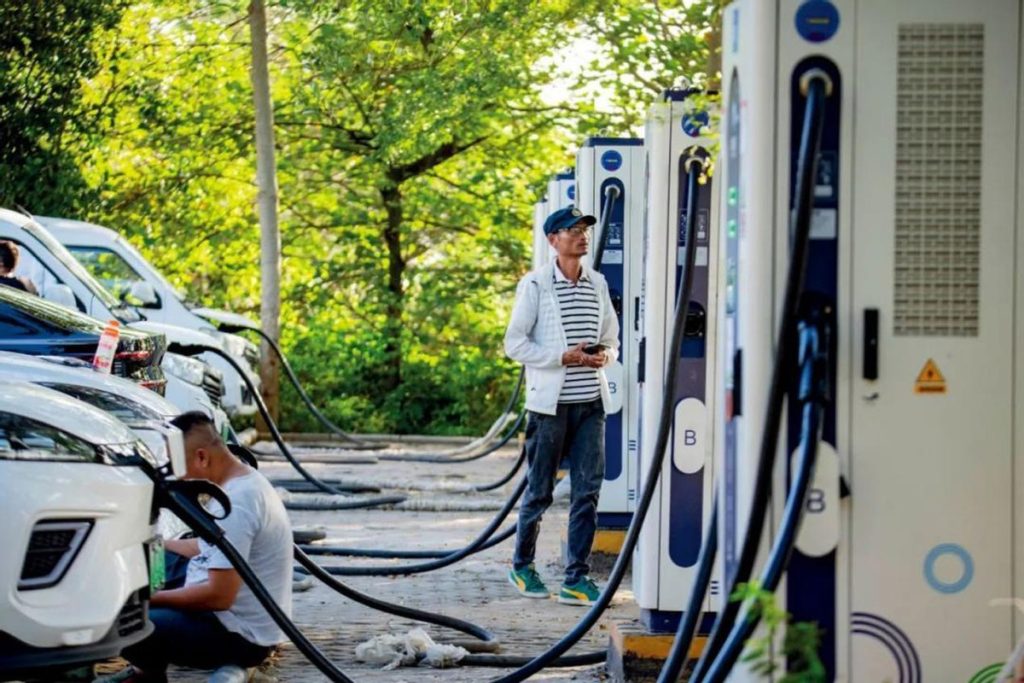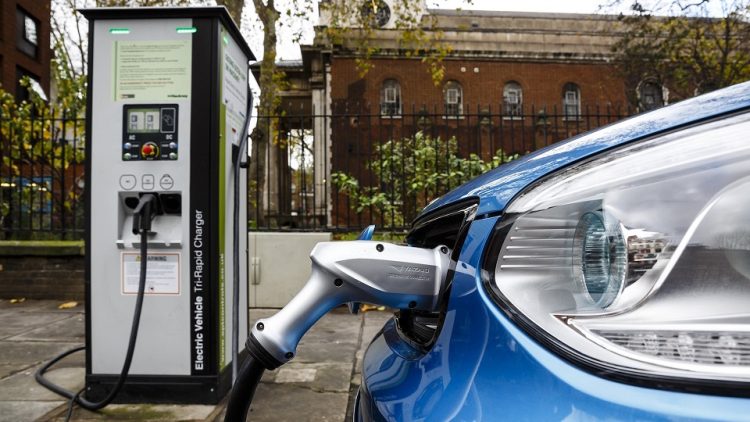One of the most persistent barriers to the widespread adoption of electric vehicles (EVs) is range anxiety—the fear that an EV’s battery will run out of charge before the driver can reach a charging station. While the battery technology used in electric vehicles has made significant strides over the last decade, range anxiety continues to be a pressing issue for many potential buyers.
Another major challenge is the balance between battery life and charging speed. EV owners want long-lasting batteries that don’t degrade quickly, but they also want the ability to charge their vehicles quickly, especially during long-distance travel. The question is: Can next-generation battery technology solve both the problem of range anxiety and the need for fast charging?
In this article, we explore the advancements in battery technology that could potentially provide solutions to these challenges, and we analyze whether battery life and charging speed can be enhanced simultaneously to create a more efficient and convenient EV ecosystem.
1. The Evolution of Battery Technology: Addressing Range Anxiety
When it comes to range anxiety, two key factors need to be addressed: the battery capacity (how much energy the battery can store) and the efficiency of the electric vehicle’s drivetrain. As of now, lithium-ion batteries dominate the market, but newer chemistries and designs are emerging with the potential to dramatically increase both range and charging speed.
Current Lithium-Ion Battery Technology: A Mixed Bag of Progress
Lithium-ion batteries have improved significantly in terms of energy density (the amount of energy they can store relative to their weight), allowing electric vehicles to achieve ranges of 250 to 400 miles per charge on average. This makes EVs like the Tesla Model S, Lucid Air, and Rivian R1T appealing to a larger group of consumers. However, they still come with certain limitations:
- Battery Size: Larger battery packs are required for longer ranges, which makes vehicles heavier and more expensive. While larger battery packs extend range, they also increase the vehicle’s overall cost and reduce efficiency.
- Energy Density Limits: Traditional lithium-ion technology has hit a “plateau” in terms of how much energy can be stored in a given volume, meaning that further increases in range will require new battery chemistry breakthroughs.
Next-Generation Battery Technologies
Several next-generation battery technologies are in development, which promise to deliver higher energy densities, longer lifespans, and faster charging times. Here are a few key innovations:
- Solid-State Batteries: Solid-state batteries, which replace the liquid electrolyte used in lithium-ion batteries with a solid electrolyte, have the potential to deliver much higher energy densities and improve safety. These batteries are lighter, can store more energy, and are less prone to overheating or catching fire. They could double the range of current EVs and reduce charging time to under 30 minutes.
- Lithium-Sulfur Batteries: Lithium-sulfur (Li-S) batteries are another promising alternative. These batteries are theoretically capable of achieving five times the energy density of traditional lithium-ion batteries. If commercialized, they could drastically increase range, offering vehicles the potential to travel over 1,000 miles on a single charge.
- Sodium-Ion Batteries: Sodium-ion batteries are emerging as a more affordable and sustainable alternative to lithium-ion. While they don’t yet offer the same energy density as lithium-ion or solid-state batteries, they could help reduce costs in budget-friendly electric vehicles without compromising too much on range.
- Graphene Batteries: Graphene-based batteries could help improve both energy density and charging speeds. These batteries could potentially provide faster recharge times (charging an EV in minutes, rather than hours) and a longer battery lifespan, which would help alleviate concerns about battery degradation.
2. The Need for Fast Charging: A Growing Challenge
While range anxiety is one of the key concerns for electric vehicle owners, charging speed is another critical factor that impacts the usability of electric vehicles. Even if an EV has a long range, long charging times remain an inconvenience for drivers, especially when they need to quickly top off their battery during long road trips.
Current Charging Speed: What’s Available Today?
The current fast-charging infrastructure for EVs is growing rapidly, but it still faces several limitations:
- Superchargers: Companies like Tesla have established fast-charging networks that allow their vehicles to recharge up to 80% in 30–45 minutes. Tesla’s Supercharger V3 can charge at 250 kW, providing a significant boost in speed.
- DC Fast Charging: Other fast chargers, such as those offered by networks like IONITY and Electrify America, use DC fast charging to deliver 50–350 kW of power. However, the range of charging speeds still varies, and finding the fastest chargers is not always guaranteed.
- Wireless Charging: Wireless charging systems, though still in the early stages, offer a potential avenue for quicker and more convenient charging. However, the technology’s speed still lags behind wired solutions.
The Challenges of Fast Charging
While fast charging is improving, several challenges remain in terms of both speed and infrastructure:
- Battery Degradation: As mentioned earlier, fast charging can be detrimental to the long-term health of a battery, as the heat generated during rapid charging can degrade the battery cells over time. Automakers are working to develop cooling technologies that help mitigate this issue.
- Grid Capacity: Fast charging requires a substantial amount of electricity, which can put strain on local power grids, particularly in regions where the grid infrastructure is outdated or underdeveloped. Charging networks need to scale up rapidly, and smart charging systems will be necessary to prevent overloading grids.
- Charging Location Availability: While major highways and urban areas have fast-charging stations, rural areas still lack the necessary infrastructure. Until charging stations are ubiquitous and more powerful, range anxiety will continue to be a concern.

3. Can Battery Life and Charging Speed Improve Simultaneously?
A major question in the development of next-generation batteries is whether battery life (i.e., how long a battery lasts before it degrades) can improve alongside faster charging speeds. Historically, these two factors have been at odds. Faster charging speeds often result in higher temperatures and faster wear and tear on battery cells, which can lead to shorter lifespans.
However, several advancements are being made to balance both factors:
Thermal Management Systems
Battery systems are being equipped with advanced thermal management solutions that prevent overheating during fast charging. Liquid cooling systems and advanced materials are being used to dissipate heat efficiently, allowing batteries to charge faster without compromising their lifespan.
Battery Chemistries Designed for Fast Charging
New chemistries, such as silicon anodes (which replace traditional graphite anodes), are being developed to allow for faster charging speeds without the associated battery degradation. Silicon anodes have a much higher energy capacity than graphite, and they can enable faster charging while retaining a longer lifespan.
Battery Management Systems (BMS)
More sophisticated Battery Management Systems (BMS) are being developed to monitor and optimize charging patterns. These systems can help ensure that batteries are charged at the optimal speed to maintain longevity, allowing for faster charging while reducing the risks of damage.
4. The Road Ahead: Can Next-Generation Batteries Solve Range Anxiety?
While next-generation batteries hold great promise for solving some of the most significant challenges facing the electric vehicle market—range anxiety and charging speed—there are still hurdles to overcome. Key considerations include:
- Cost: New battery technologies, particularly solid-state batteries and lithium-sulfur batteries, could be more expensive to produce initially, which may raise the cost of electric vehicles.
- Infrastructure: Even with faster charging technology, charging infrastructure needs to expand rapidly to keep pace with the growing number of electric vehicles on the road.
- Consumer Confidence: While advancements in range and charging speed are significant, addressing consumer perceptions of EV reliability, convenience, and long-term viability will require a consistent track record of performance and safety.
Despite these challenges, the future looks promising. Advances in battery chemistry, charging technologies, and infrastructure are converging in ways that could make range anxiety a thing of the past and fast charging a mainstream solution. With solid-state batteries, AI-driven charging systems, and a robust charging network, it’s likely that battery life and charging speed will improve simultaneously, making electric vehicles not only a viable alternative to gasoline cars but also an integral part of the sustainable future of transportation.
As the next generation of electric vehicle batteries comes into play, it’s clear that the future of electric mobility is on the fast track, and the road ahead holds exciting potential for longer ranges, faster charging times, and a greener future.











































